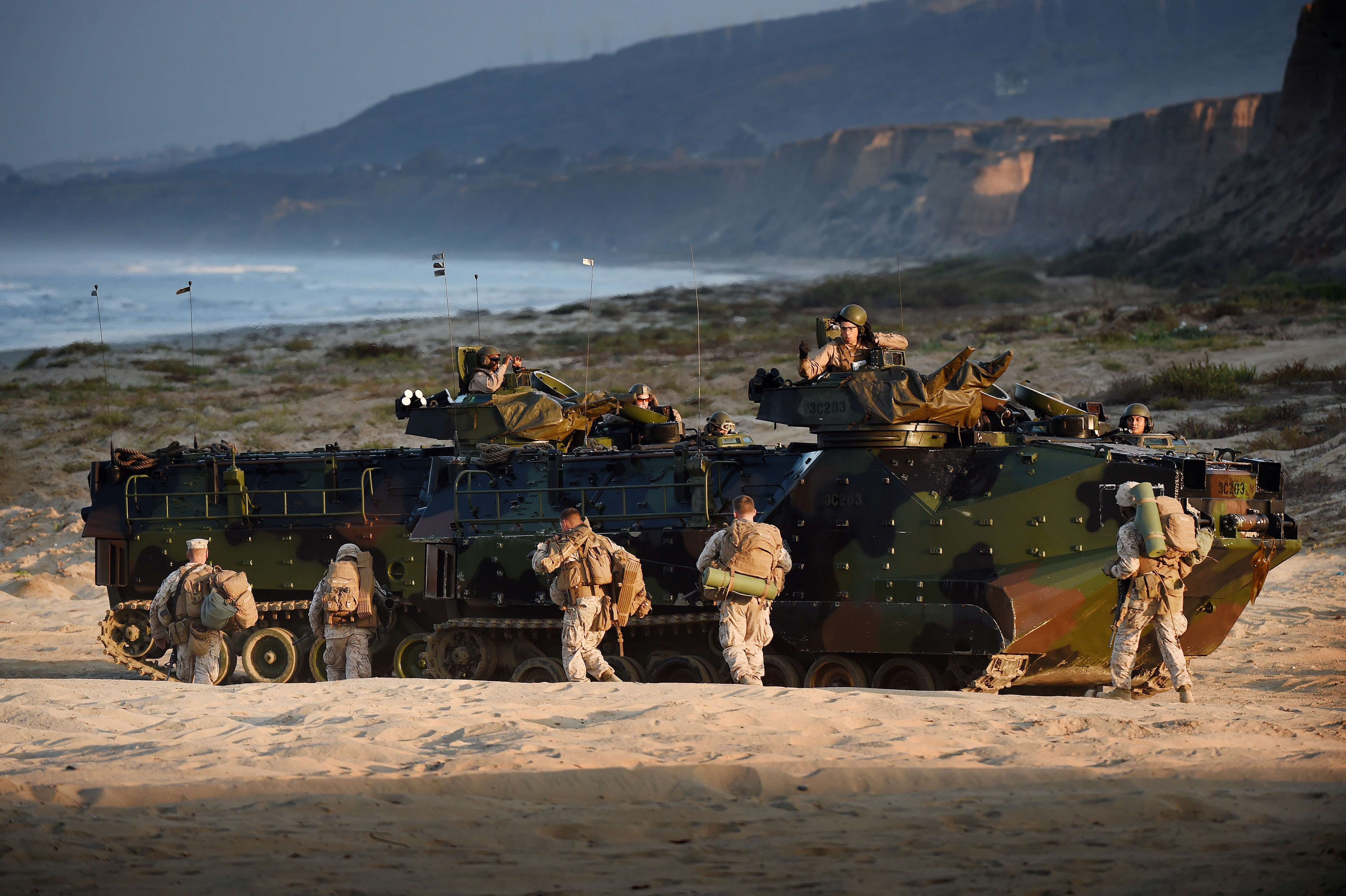The Marine Corps wants in on the submarine-hunting game, according to Marine Corps Commandant Gen. David Berger, including the role of helping the Navy identify, track and even sink submarines.
In Berger’s vision, the Corps will deploy on bases in the Atlantic’s North Sea, the Arctic Ocean’s Norwegian Sea and the northern Pacific’s Bering Sea to bottleneck Russian submarines ― while similar bases in the South China Sea will prevent Chinese submarines from leaving territorial waters.
“The undersea fight will be so critical in the High North and in the western Pacific that the Marine Corps must be part of it,” Berger wrote in an U.S. Naval Institute article.
RELATED

Since taking over as commandant in 2019, Berger has preached a smaller, lighter, faster Marine Corps ― one dispersed onto small expeditionary advanced bases, with increased integration with the Navy in preparation for America’s next war.
The expeditionary advanced bases will see small units of Marines armed with ship-sinking missiles and the ability to provide logistical support to the Navy if needed.
“By offering forward logistics and support, as well as sensor and strike capabilities, Marine expeditionary advanced bases (EABs) could make a significant contribution to undersea warfare campaigns, including holding Chinese and Russian submarines at risk,” Berger said in the article.
The Marine Corps would be able to play a role in hosting the P-8A Poseidon and MH-60R Seahawk, currently used by the Navy to hunt and destroy submarines, on Marine expeditionary advanced bases, Berger said.
The Marine Corps would then provide the air-defense and logistical support the two aircraft need to complete their mission.
“As much as you can, you put aside, service turf wars or competition for roles and missions and you say, ‘Who? Who can do the job?’” Capt. Walker Mills said. Mills currently is an exchange officer with the Colombian marines and recently co-authored an essay on expeditionary anti-submarine warfare.
Though the logistics role may be a simpler one to take on, Berger said, the Corps could also invest in its own sensor and attack technology.
Marines “could operate unmanned air vehicles equipped with ASW sensors and sonobuoys and deploy and operate passive and active acoustic arrays in adjacent littoral waters," Berger said. “In the event of hostilities, when cued by these organic sensors or other joint ISR capabilities, EABs could harass and potentially neutralize Russian submarines with ground-launched ASW missiles or light torpedoes from Marine aircraft.”
The Marine Corps anti-submarine warfare capabilities likely wouldn’t match those of the Navy, Mills said.
“Anything that we’re applying to the anti submarine role is kind of like second best or, you know, or third or fourth or fifth best option,” Mills said.
Even though the weapons may not be as effective, they would still have value in the fight, Mills added.
But the Corps wouldn’t necessarily have to sink a sub to neutralize it, Bryan Clark, a senior fellow and director of the center for defense concepts and technology at the Hudson Institute, told Marine Corps Times.
“This approach would allow the Marines to harass submarines that are trying to make it through choke points that the Marines have forces adjacent to, and hopefully drive those submarines back in towards the home port as they came from,” Clark said.
Having Marines already deployed on expeditionary advanced bases simply add an anti-submarine warfare component to their mission would be convenient and cost-effective, Clark added.
The current system to hunt and deter submarines used by the Navy relies on a mix of Poseidons, surface vessels, submarines, Seahawks and sonobuoys, small expendable sonar systems.
The procurement cost for all the equipment needed to successfully close the gap between the U.K., Greenland and Iceland to Russian submarines would be nearly $20 billion, according to a recent study by the Hudson Institute, while the operational cost for closing the gap would come to nearly $124 million.
“The beauty of that approach is it’s pretty inexpensive, because the Marines are a lot cheaper than having a P-8 fly around doing orbits around the area,” Clark said.
“The Marines could just be there on the ground the whole time doing their other day job and when they pick up the submarine they respond."
Beyond the financial savings, it makes strategic sense, especially in the western Pacific, Clark said.
“The Chinese have a few dozen modern nonnuclear and nuclear submarines that are a threat," Clark said. “If you try to do anti-submarine warfare against these submarines and they flood the zone you are going to be unable to track them all.”
“This idea the Marines have is going to be more scalable … the Marines could have the capacity the Navy needs in the Pacific."
Mills, along with Lt. Cmdr. Dylan “Joose” Phillips-Levine, suggested the fleet could operate Mark IV patrol boats, armed with sonobuoy launchers and lightweight torpedoes off of the expeditionary advanced bases.
While not as fast as the Seahawk or as deadly as the Poseidon, the Mark IV patrol boat would be capable of operating out of significantly more austere conditions that may be less noticeable to the Chinese military.
It’s about “as austere” as you can get with a manned platform, Mills said. Marines will be lower, using less gas, needing less spare parts and are going to need less maintainers.
While a war against China or Russia may not be on the immediate horizon, Berger said, the Corps getting into the submarine hunting game would have an immediate effect in Europe, where Russian submarines are probing NATO countries for weaknesses.
“It is now clear that a fourth battle [of the Atlantic] is not looming, but is being waged now, across and underneath the oceans and seas that border Europe,” Berger wrote in the USNI article.
“This is not a kinetic fight. It is a struggle between Russian forces that probe for weakness, and U.S. and NATO ASW forces that protect and deter. Just like in the Cold War, the stakes are high."




